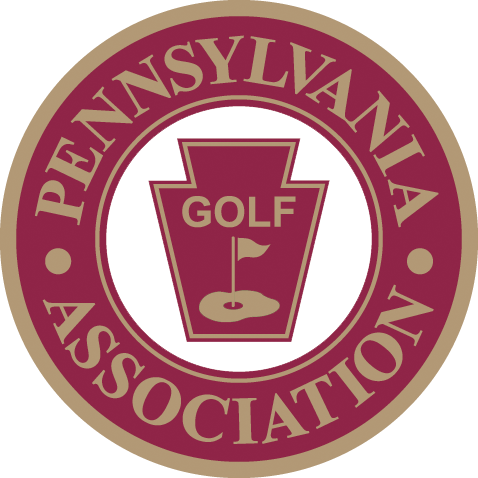Wyoming Valley Country Club
| Wyoming Valley Country Club 1695 S. Main St. P.O. Box 996 Wilkes-Barre, PA 18703-0996 wvccpro@ptd.net wyomingvalleycountryclub.com Architect: A.W. Tillinghast | |||||||||||||||||||||||||||||||||||||||||||||||||||||||||||||||||||||||||||||||||||||||||
| |||||||||||||||||||||||||||||||||||||||||||||||||||||||||||||||||||||||||||||||||||||||||
| Golf Professional | Pete Korba | (570) 824-8241 |
| General Manager | Matt Berry | (570) 824-8241 |
| Superintendent | Jason Kahr | (570) 824-8241 |
Course Slope & Ratings
| Wyoming Valley Country Club Tees | Front 9 | Back 9 | Course | ||||||
|---|---|---|---|---|---|---|---|---|---|
| Rating | Slope | Rating | Slope | Yards | Rating | Slope | Par | ||
| Gold | Male | 33.1 | 119 | 33.4 | 119 | 5193 | 66.5 | 119 | 71 |
| White | Male | 34.7 | 126 | 34.8 | 124 | 5865 | 69.5 | 125 | 71 |
| Blue | Male | 35.6 | 130 | 35.2 | 126 | 6153 | 70.8 | 128 | 71 |
| Crystal | Female | 31.7 | 103 | 31.8 | 98 | 3913 | 63.5 | 101 | 73 |
| Red | Female | 35.2 | 118 | 35.5 | 112 | 5107 | 70.7 | 115 | 73 |
| Gold | Female | 35.4 | 120 | 35.8 | 114 | 5193 | 71.2 | 117 | 73 |
| White | Female | 37.4 | 128 | 37.5 | 120 | 5865 | 74.9 | 124 | 73 |
Directions
Club History
The Wyoming Valley Country Club was officially chartered on June 16, 1896. It is the 5th oldest course in Pennsylvania and 45th in the United States, according to USGA records. The wisdom and dedication of Andrew Derr and John Conyngham were key factors to the establishment and construction of the Wyoming Valley Country Club. The Club’s site was selected chiefly for its scenic beauty and its easy accessibility to Wilkes-Barre. Entrance to the Club was off the road that paralleled what is now the Sans Souci Highway and up the hill along the present #5 tee. The clubhouse was located on the hill between the present #5 green and the #4 tee. Concrete steps to the old clubhouse can still be found on the original site. The official opening of the clubhouse was on Oct. 17, 1896. The membership was comprised of most of the leading families in the Wyoming Valley. Many of the streets in Wilkes-Barre, and particularly Kingston, were named after Club members, attesting to their pivotal role in the community.
The original Wyoming Valley Country Club golf course consisted of nine holes, and was 2,821 yards long. The land was leased from the Glen Alden Coal Company, and until 1957, the Club paid only the taxes on the land as fee of the lease agreement. The original greens were dirt rolled smooth by a heavy roller. Around 1900, club officials decided to experiment by sodding several of the greens. This experiment was seriously objected to by a large number of the membership, as they saw no reason for the extra expense. After the work was completed; however, the consensus of opinion was that it was a good idea and the rest of the greens were sodded. Layout changes were made in 1901.
In addition to golfing, the social activities at the Club included tennis, bowling, trap-shooting, cycling and horseback riding. Shortly after the turn of the century, interest in bowling faded, and the two bowling alleys were converted into a golf shop. Tennis continued to be played on four courts until the 1930’s, in the area to the right of the present men’s and women’s #6 tee.
In 1922, a committee was formed to investigate the possibility of renovating the clubhouse and adding holes to the golf course, but it wasn’t until March 1924 that this proposition was approved. At that time, A.W. Tillinghast, who later became a world renowned golf course architect, was hired. Work began on the course in March 1924, with fairways and greens seeded late that summer. Shortly after this, heavy rains washed away many of the seeded areas, requiring new seeding and a delay until July 4, 1925 for the official opening of play. Fifteen new holes had been constructed and three holes on the original layout of 1901 were reconstructed, tennis courts were renovated, improvements were made to the clubhouse and a fence was constructed. The total cost of this project was $104,639.
On Oct. 31, 1935, a fire broke out in the clubhouse, and while nearby fire companies responded promptly all that remained was the locker room and bowling alley, which had been turned into a pro shop. After several meetings, officials decided to move the clubhouse to its present location.
In 1957, all members of the Wyoming Valley Country Club became owners of the Club and its property, with equity as prescribed by the current by-laws. The man responsible for that innovation was Judge Michael Sheridan, at the time a practicing attorney and member of Wyoming Valley Country Club who did business with the Glen Alden Coal Corp. The membership borrowed the money for the acquisition of the club, which occurred on January 28, 1958. In order to pay for the acquisition, each member of the Club was asked to purchase a bond of $750. The first bond was sold to Leo Corgan on December 10, 1957, and the last in 1960. Those current members of the Club who did purchase bonds are owed a debt of gratitude.
